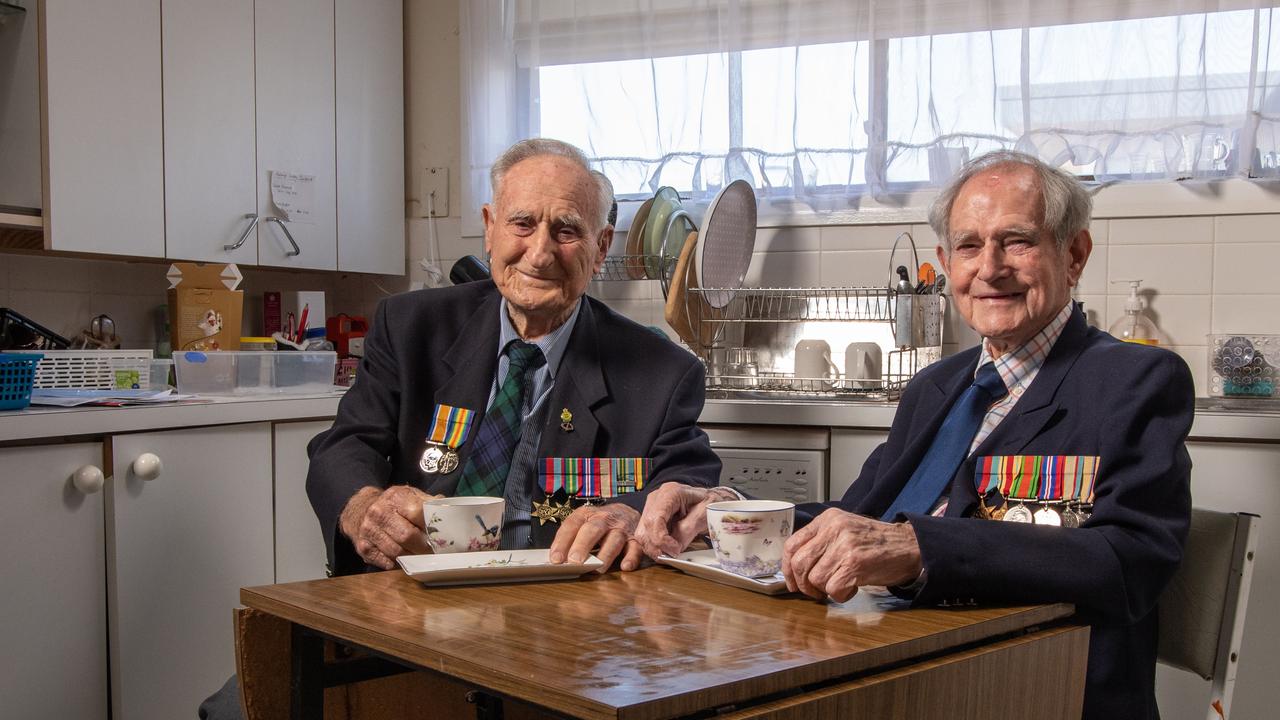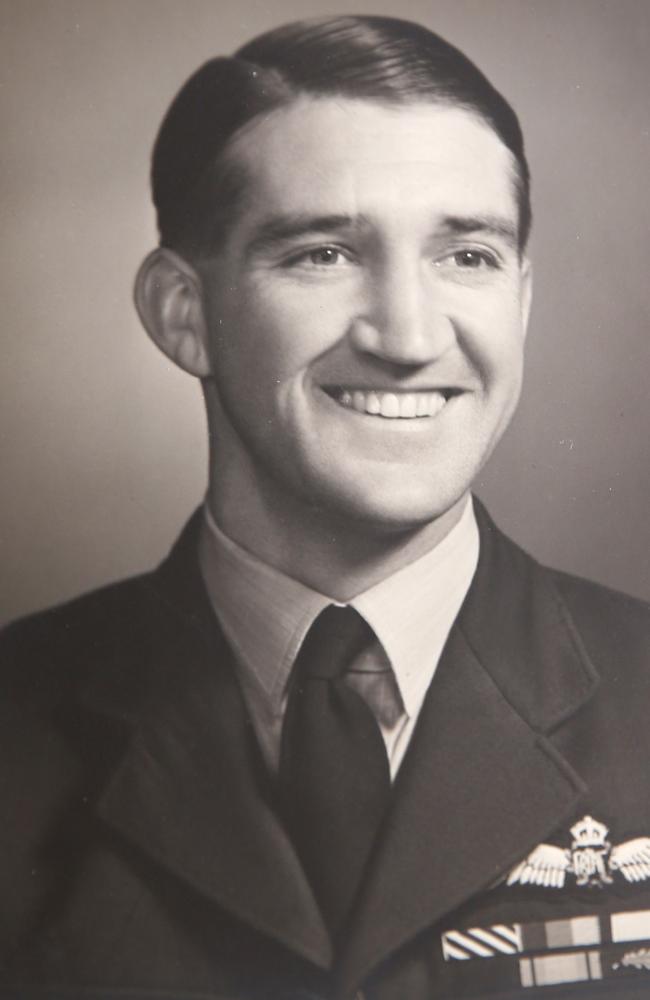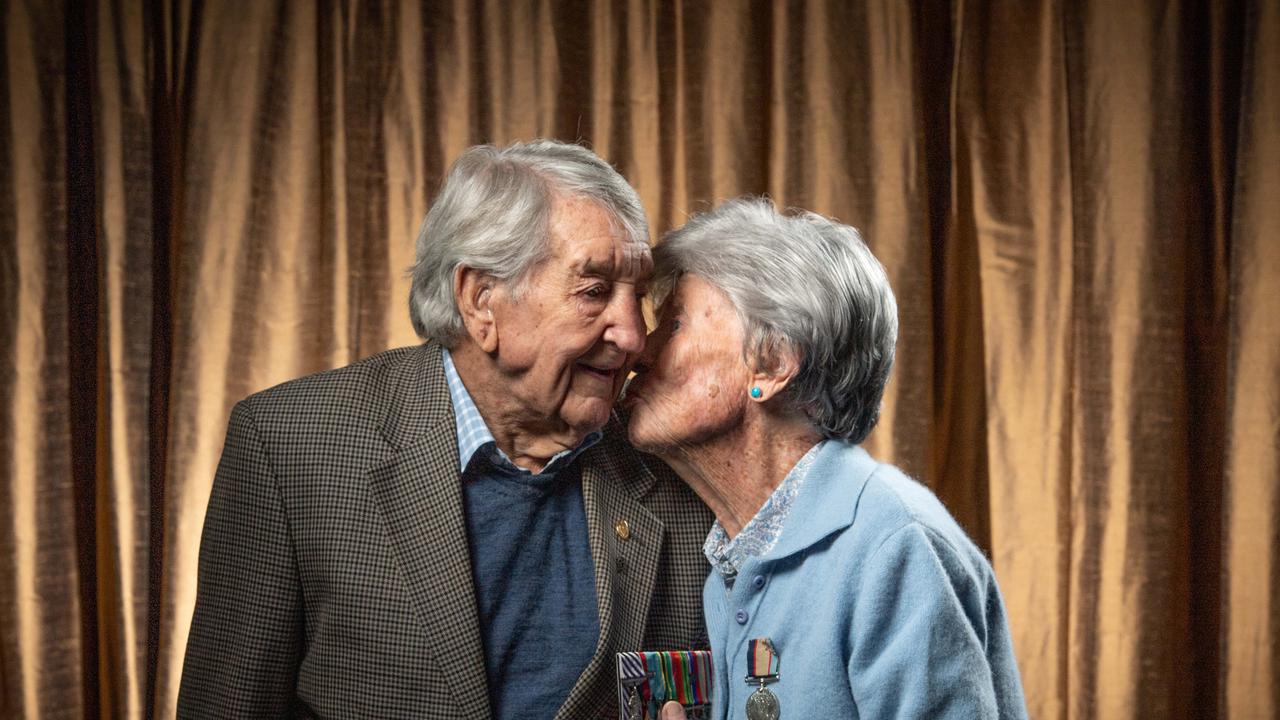War heroes share brave and courageous tales to mark Anzac Day
Three Geelong men were at their prime of their lives when they were sent to war. Now, seven decades on, their share their harrowing experience.

Geelong
Don't miss out on the headlines from Geelong. Followed categories will be added to My News.
When World War II began, many who would go on to serve in the war were no more than schoolboys and university students.
Crowding into Naughton’s Hotel opposite Melbourne University, Ocean Grove’s Cecil ‘Boz’ Parsons and half a dozen of his mates discussed the war and spoke of signing up.
On September 1, 1939, British prime minister Neville Chamberlain declared war on Nazi Germany.
Two days later Australia followed suit.
A few ended up in the army, but Mr Parsons joined the air force.
He’d always wanted to fly, but could never afford to.
In Geelong, Lawrence Braybrook and Jack Anderson were 14 when the war broke out.
The pair met in grade three at Ashby Primary School in 1933 and have remained firm friends for 90 years.
Mr Braybrook recalled how he heard the news.
“My mother came into my room one night to tell me that then Prime Minister Robert Menzies had declared war on Germany; I did not like what I was hearing,” he said.
“I prayed the war would be over by the time I turned 18.”
It was to be the most devastating conflict the world had ever seen.

Each year, Anzac Day is a day of reflection and remembrance, where the stories of those who served can be told.
Many came from Geelong, although only a handful remain - now, more than ever, it’s important to tell the their stories.
One of the qualities inherent to the Anzac spirit was courage, something certainly displayed by Mr Parsons.
Now 104, Mr Parsons enjoyed a distinguished career in the RAAF, being mentioned in dispatches twice and earning a Distinguished Flying Cross for actions in 1944.
But survival was never a certainty, luck and an ability to remain composed kept him alive.
Mr Parsons trained in Australia and Canada before arriving in England and being drafted into the RAF’s Bomber Command.
Bomber Command had one of the highest casualty rates of any unit in the war; of the 125,000 aircrew who served during the war, 55,573 were killed in action.
On that very first flight, a bombing raid on Hamburg in Germany, the plane Mr Parsons was in was “coned” - caught in search lights and began taking fire from the German defences.
The captain panicked, and put the plane into a dive.
Mr Parsons and the plane’s navigator together managed to right the plane at the last second; when they did, the plane was skimming the frigid waters of the Baltic.

Over the next three years, Mr Parsons flew 25 daring, night raids over Germany.
He and his crew flew the Armstrong Whitworth Whitley, a slow, cumbersome bomber that was known as the “flying coffin”.
But Mr Parsons loved the plane, and was skilled behind the controls.
With Whitleys being phased out of frontline service, Mr Parsons became a night flying instructor, a move which possibly saved his life.
The very next flight his crew took, with their new captain, was shot down. The entire crew was instantly killed.
In 1944, Mr Parsons returned to Australia, flying American-made B-24 Liberators across the Pacific theatre.
It was here that he won a Distinguised Flying Cross, after flying 12 hour missions over enemy-held territory in New Guinea, “through radar nets, warding off swarms of enemy fighters” in “turbulent tropical weather” to drop men and supplies.
Just as he had over the Baltic, Mr Parsons remained calm and collected and didn’t waver.
After the war, one of the men he had dropped in the jungle wrote to him, thanking him.
Mr Parsons loved flying Liberators, he loved flying in general and it was a lifelong passion.
“It was the most important thing the air force did, it was very special,” Mr Parsons said.
“It was different, and took a fair amount of skill.”

That year the young pilot also met his future wife Barbara Cane, who was working as a flying physio across Australia.
The pair met through Mr Parsons’ sister was roomed with the future Mrs Parsons for work.
They quickly fell in love and married, after the war ended, in Adelaide in 1947.
Now aged 104 and 102 respectively the pair, who have three children, live together in Ocean Grove.
Courage, bravery and valour in the midst of battle are not the only parts of the Anzac spirit that is remembered on Anzac Day.
The Anzac legend was not only forged through acts of military valour, but also through the mateship and compassion of Mr Braybrook, 97, and Mr Anderson, 98.
It took courage to enlist, having lived through four years of war from home; the first time war had reached Australia’s shores.
Darwin was bombed, Japanese midget submarines popped up in Sydney Harbour and everywhere friends and family had gone off to fight.
The pair, and the rest of their generation, grew up under the influence of the first Anzacs.
“My father had told me a lot about France and Belgium in WWI; he was a Lewis machine gunner... a Lewis gunner’s life revolved around killing or being killed,” Mr Braybrook said.
His father’s story had a profound effect on the young man and, despite knowing the dangers, he was determined to enlist.
“I could see my mates from school going and I could not stay home,” he said.
Both men enlisted in 1943.
Mr Braybrook in 1944, arrived on Bougainville Island, in the Solomon Islands; the site of one of the most bloody campaigns of the war.
More than 500 Australians were killed on the island, among them were two of Mr Braybrook’s “very close mates”.

When the war ended, Mr Braybrook was on the banks of Mivo River, preparing for a final push against the remaining Japanese forces on Bougainville.
The Hamlyn Heights resident recalls feeling nervous, even with the end of the war looming.
“We woke up one morning and there was a rumour the Americans had dropped a great big bomb,” he said.
“They thought the Japanese might surrender, and we were delighted.
“As it went on… we were worried that if the Japanese had been ordered to fight to the last, they might go mad.”
Mr Braybrook said his unit were prepared for a last minute assault when they saw the Japanese approaching across the river.
“Instead of waving rifles, they were waving white flags; they wanted to surrender,” he said.
“They didn’t want to die, all that business about them wanted to die for their emperor is bunkem; they were as glad as us the war was over.”
At that moment, Mr Anderson was flying over the Pacific; it wasn’t something he normally had to do.
Mr Anderson spent much of his time at an airbase on Labuan Island, in present-day Indonesia.
“When Laurie joined the army, I joined the RAAF,” Mr Anderson said.
“One of my older brothers was in the army, and he’d disappeared. He was one of the Rats of Tobruk.
“My mother and I didn’t know where he was for about 18 months, until he turned up in a prison camp.”
“One of my sisters was a nurse in the Australian army, and on May 8, 1943 she died.”
“All of these things had an influence on us.”
“I was an armourer... after each flight, we’d be in the ground crew attending to the guns and the bomb bay.
“Often air gunners were in short supply... gunners would be the first to die, particularly the tail gunner; once he was gone, the plane was vulnerable.
“Normally, I wouldn’t be flying... (but) being an armourer, you’d be called on do a few flights as a gunner.”
Mr Anderson did half a dozen flights before the war’s end, risking enemy groundfire and fighters.
“On the seventh flight, we were radioed and told that the war had ended,” he said.
Mr Anderson recalled his “saddest moment” of the war was leaving Labuan Island.
“I was really broken up, below us were so many Australian servicemen in graves there,” he said.
Mr Anderson will be marking Anzac Day by marching in Geelong’s Anzac Day parade with his family.
The stories of Cecil ‘Boz’ Parsons, Lawrence Braybrook, and Jack Anderson are a testament to the Anzac spirit that is still remembered and celebrated every year.
More Coverage
Originally published as War heroes share brave and courageous tales to mark Anzac Day





